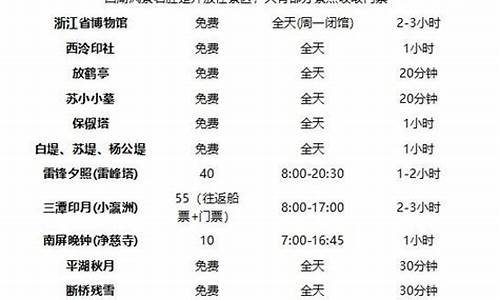日本旅游景点英文_日本旅游景点英语

日本东京迪士尼英语介绍:
Tokyo Disneyland, built in 1982, is located in Pu'an City, Chiba Prefecture, east of Tokyo, Japan. It was built by Disney Corporation of the United States and Catalpa Design Company of Japan. Tokyo Disneyland, known as Asia's first amusement park, was built according to American Disneyland. The theme park covers an area of 46 hectares.
Tokyo Disneyland is mainly divided into seven districts: World Fair, Adventure Park, West Paradise, Animal World, Dreamland, Cartoon City and Tomorrow Paradise. There are various parades on the stage and square.
日本东京迪士尼汉语介绍:
东京迪士尼乐园,修建于1982年,位于日本东京都以东的千叶县浦安市舞滨,是由美国迪士尼公司和日本梓设计公司合作建造的。被誉为亚洲第一游乐园的东京迪士尼乐园,依照美国迪士尼乐园而修建,主题乐园面积为四十六公顷。
东京迪士尼乐园主要分为世界市集、探险乐园、西部乐园、动物天地、梦幻乐园、卡通城及明日乐园等7个区,园内的舞台以及广场上定时会有各种各样的游行活动。
扩展资料:
东京迪士尼必玩项目:
一、“米奇屋”的歌舞剧
喜欢米奇老鼠的朋友可别错过,这里每时每刻都有大型歌舞可看,主角都是迪士尼中的角色。伴奏的曲目,也都是迪斯士尼**的名曲。
二、灰姑娘城
这可是有点惊险的地方,喜欢冒险的朋友一定会钟意。这也是东京迪士尼的“独家经营”。游客们进入城堡中,通过城堡探险活动,互动性很强。“灰姑娘城”是迪士尼中最受欢迎的地方之一。
三、梦幻园
这是一个童话式的乐园。在这里你可以遇到许多童话中的主人公,灰姑娘、匹诺曹、米奇,还能到“小小世界”里去逛逛,一边听着由世界各国演唱的“小小世界”,坐着小船。
从欧洲、亚洲、非洲一直到中南美洲和太平洋洲,不同的民俗风情,最终在童声大合唱中结束世界一周的旅行,你一定会不想离开这个梦一般的世界。
百度百科—东京迪士尼乐园
Arashiyama(岚山)
Arashiyama (岚山 ?) is a district on the western outskirts of Kyoto, Japan. It also refers to the mountain across the ?i River, which forms a backdrop to the district.
Notable tourist sites in Arashiyama include
The Iwatayama Monkey Park on the slopes of Mount Arashiyama. Over 170 monkeys live at the park. While the monkeys are wild, they have become accustomed to humans. The park is located on a small mountain not far from the Saga-Arashiyama rail station. Visitors can approach and photograph the monkeys. At the summit is a fenced enclosure, from within which visitors can feed the monkeys.
The romantic "Moon Crossing Bridge" (渡月桥,Togetsukyō), notable for its views of cherry blossoms and autumn colors on the slopes of Mt Arashiyama.
The tombstone of the Heike courtesan Kogo of Sagano.
Tenryū-ji, the main temple of the Rinzai school, one of the two main sects of Zen Buddhism in Japan.
The hamlet of Kiyotaki, a small scenic village at the base of Mt Atago, the home to a notable Shinto shrine.
Matsuo Shrine, half a mile south of the area, which is home to a blessed spring. It is also one of the oldest shrines in the Kyoto area, founded in 700. The alleged restorative properties of the spring bring many local sake and miso companies to the shrine for prayers that their product will be blessed.
Kameyama koen has a stone commemorating Zhou Enlai's visited to Arashiyama. He was moved by the cherry blossoms and mountain greenery. The four poems Zhou Enlai wrote about his visit are engraved on a stone monument: "Arashiyama in the Rain."
Nijō Castle(二条城)
Nijō Castle (二条城 ,Nijō-jō?) is a flatland castle located in Kyoto, Japan. The castle consists of two concentric rings of fortifications, the Ninomaru Palace, the ruins of the Honmaru Palace, various support buildings and several gardens. The surface area of the castle is 275,000 square meters, of which 8000 square meters is occupied by buildings.
History
Present plan of Nijō Castle (click for detailed view)In 1601, Tokugawa Ieyasu, the founder of the Tokugawa Shogunate, ordered all the feudal lords in Western Japan to contribute to the construction of Nijō Castle, which was completed during the reign of Tokugawa Iemitsu in 1626. Parts of Fushimi Castle, such as the main tower and the Kara Gate, were moved here in 1625-26.[1] It was built as the Kyoto residence of the Tokugawa Shoguns. The Tokugawa Shogunate used Edo as the capital city, but Kyoto continued to be the home of the Imperial Court. Kyoto Imperial Palace is located north-east of Nijo Castle.
The central keep, or donjon, was struck by lightning and burned to the ground in 1791.
In 1788, the Inner Palace was destroyed by a city-wide fire. The site remained empty until it was replaced by a prince's residence transferred from the Kyoto Imperial Palace in 1893.
In 1867, the Ninomaru Palace was the stage for the declaration by Tokugawa Yoshinobu, returning the authority to the Imperial Court. Next year the Imperial Cabinet was installed in the castle. The palace became imperial property and was declared a detached palace. During this time, the Tokugawa hollyhock crest was removed wherever possible and replaced with the imperial chrysanthemum.
In 1939, the palace was donated to the city of Kyoto and opened to the public the following year.
Ryōan-ji(龙安寺)
Ryōan-ji (Shinjitai: 竜安寺, Kyūjitai: 龙安寺 ?, The Temple of the Peaceful Dragon) is a Zen temple located in northwest Kyoto, Japan. Belonging to the Myoshin-ji school of the Rinzai branch of Zen Buddhism, the temple is one of the Historic Monuments of Ancient Kyoto, a UNESCO World Heritage Site.
The site of the temple was originally a Fujiwara family estate. It eventually came into the hands of the Hosokawa clan branch of the Fujiwaras. Hosokawa Katsumoto inherited the residence, and lived here before the ?nin War. Katsumoto willed the war-ravaged property to be converted into a Zen sect temple complex after his death. Later Hosokawa emperors are grouped together in what are today known as the "Seven Imperial Tombs" at Ryoan-ji. The burial places of these emperors -- Uda, Kazan, Ichijō, Go-Suzaku, Go-Reizei, Go-Sanjō, and Horikawa -- would have been comparatively humble in the period after their deaths. These tombs reached their present state as a result of the 19th century restoration of imperial sepulchers (misasagi) which were ordered by Emperor Meiji.[1]
Ryōan-ji's tsukubai (蹲踞 ?), which is a small basin provided at Japanese Buddhist temples for visitors to purify themselves by the ritual washing of hands and rinsing of the mouth.An object of interest near the rear of the monks quarters is the carved stone receptacle into which water for ritual purification continuously flows. This is the Ryōan-ji tsukubai (蹲踞 ?), which translates literally as "crouch;" and the lower elevation of the basin requires the user to bend a little bit to reach the water, which suggests supplication and reverence.[2] The kanji written on the surface of the stone are without significance when read alone. If each is read in combination with 口 (kuchi), which the central bowl is meant to represent, then the characters become 吾, 唯, 足, 知. This is read as "ware tada taru (wo) shiru" and translates literally as "I only know plenty" (吾 = ware = I, 唯 = tada = only, 足 = taru = plenty, 知 = shiru = know). The meaning of the phrase carved into the top of the tsukubai is simply that "what one has is all one needs" and is meant to reinforce the basic anti-materialistic teachings of Buddhism.
The absence of a dipper is intended to imply that the water is for the soul only and that it is necessary to bend the knee in humility in order to receive its blessing.
Kiyomizu-dera(清水寺)
Kiyomizu-dera (清水寺 ?), full name Otowa-san Kiyomizu-dera (音羽山清水寺 ?) is an independent Buddhist temple in eastern Kyoto. The temple is part of the Historic Monuments of Ancient Kyoto (Kyoto, Uji and Otsu Cities) UNESCO World Heritage site.[1] Not one nail is used in the whole temple. The temple should not be confused with Kiyomizu-dera in Yasugi, Shimane, which is part of the 33-temple route of the Chūgoku 33 Kannon Pilgrimage through western Japan.[2]
其实这些都是维基百科找来的,本来想给链接的,百度说我有广告,只贴了部分,其他的可用google 维基百科英文版找,包括景点介绍,历史什么的很全的。
声明:本站所有文章资源内容,如无特殊说明或标注,均为采集网络资源。如若本站内容侵犯了原著者的合法权益,可联系本站删除。












